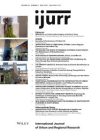How do households belonging to the middle classes decide to come live in a ‘poor’ city in the Parisian suburbs? What makes them stay? What are the judgements and strategies that have been brought to bear both individually in their daily lives and as a social group in terms of their collective involvement and their relationships with other social groups? What does this kind of ‘social mix’ imply in terms of social practices, local and social belonging? This article shows that attitudes towards social mixing have to be considered in terms of their sociological dimensions. This analysis thus takes into account middle‐class diversity in socio‐residential terms, in terms of trajectories, values and attachment to a particular area. The article also emphasizes the importance of distinguishing between different dimensions of attitudes towards social mixing: depending on the issues at stake, people can accept and sometimes promote a form of cohabitation, or, quite to the contrary, reject it. Finally, the article emphasizes the importance of local contexts and their temporality: for someone belonging to the middle classes, living in a poor city may also mean holding a relatively higher position than elsewhere.
Details
Written by:
Marie‐Hélène Bacqué, Eric Charmes, Stéphanie Vermeersch
Digital Object Identifier (DOI)
10.1111/1468-2427.12130
About DOI
Read full article as PDF
Read full article as HTML
See the references for this article
